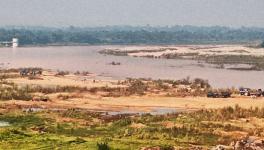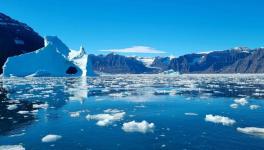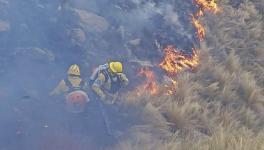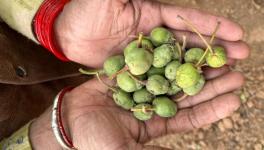IPCC Report: National-Level Push to Mitigate Enormous Climate Impact Risks a Must for India
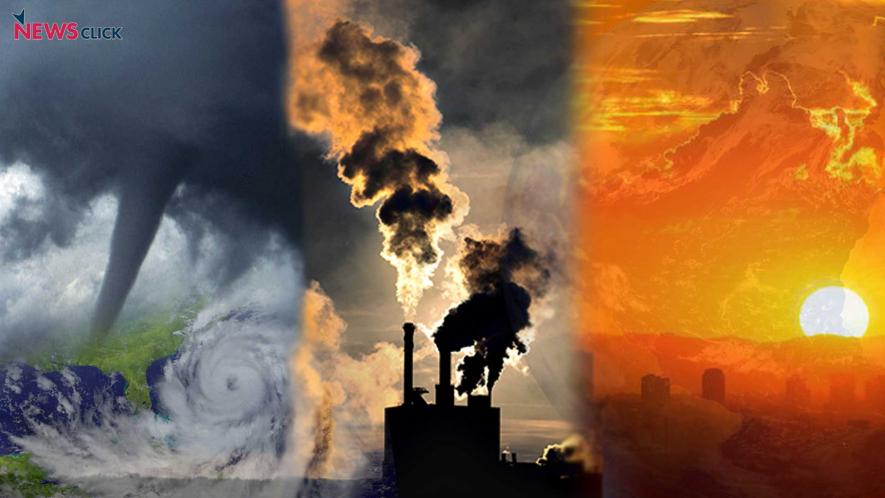
The Report of Working Group 2 (WG2) of the Sixth Assessment Report (AR6) of the Intergovernmental Panel on Climate Change (IPCC), or IPCC/AR6/WG2, on Impacts, Vulnerability and Adaptation was released earlier this week. This is the second volume in the series of reports from the sixth cycle of assessments by IPCC, normally taken up every six or so years.
These assessment reports are written by scientists from all over the world, based on hard data and published papers, and then peer reviewed internationally through a process which has rightly earned for them the reputation of the world’s most authoritative scientific reports on climate change with the broadest consensus in the scientific community.
IPCC Reports
The first volume dealing with the physical science aspects had been released before the Glasgow Climate Summit in October-November 2021 and, as expected, influenced it deeply. It did not, however, have the ‘shock and awe’ effect the media had ascribed to it, because it had followed three other special reports by IPCC which had understandably anticipated most of its findings.
These three reports were on the scientific implications of the aspirational target of limiting global average temperature rise to 1.5 degrees C as set in the Paris Agreement, on the potential impact of climate change on land systems, and on the impact on the cceans and the cryosphere or the frozen areas of the planet.
The Working Group 2 Reports cover the likely impacts of climate change on ecosystems, habitats and people in different parts of the world, associated vulnerabilities and measures that may be taken to adapt to these changes and build resilience, i.e. ability to resist or overcome these changes. The Working Group 3 Reports, yet to come for the sixth round, deals with mitigation i.e. measures to reduce emissions and, therefore, changes to climate systems.
It would be appreciated, as is repeatedly underlined in these reports, that these Working Group themes, starting with the physical science basis, deal with highly complex systems and processes which together determine global and regional climate, itself a highly complex phenomenon. Thus findings and future projections are not definitive or exact, but projections made by scientists with different degrees of confidence, and within a certainty range of probability or certainty.
Over the years, given more and better data, and improving analytical tools, the degrees of certainty of predictions have been steadily increasing. While the first Assessment Report had said climate change was due to anthropogenic factors with a roughly 65-70% certainty, AR6/WG1 had categorically stated that, in overall terms, contemporary climate change was unequivocally due to anthropogenic activities.
However, that still leaves considerable uncertainty as regards specific aspects, given the complexity of the systems involved. For instance, scientists may predict that sea-levels will rise across the world due to climate change, but would do so within fairly wide ranges of sea-levels in different parts of the world.
Thus, when changes in climate are themselves difficult to predict with high degrees of certainty, impacts of climate change pose greater challenges given the further complexity introduced by local conditions and variability, and mutual interactions of different factors. This is the difficulty facing the authors of WG2. WG2 Reports, therefore, make projections within fairly wide ranges, and spell out the interactions of different factors with as much certainty as possible.
This undoubtedly poses difficulties for national policy-makers who would have preferred more definitive projections. At the same time, making plans to cope with likely changes within a certain projected range with respect to climate change is not different from what national and local governments are called upon to do in various developmental spheres.
Indeed, national governments as well as other stakeholders in each country would be well-advised to conduct more studies within their respective capabilities, focusing especially on more local data correlated with information on other relevant local factors in order to prepare and implement adaptation programmes.
The AR6/WG2 Framework
The present Working Group 2 Report must be seen against the above background.
One straightaway notes that AR6/WG2 has adopted a quite different framework from earlier reports which presented data on different aspects of climate impacts in different regions. AR6/WG2, however, takes a more multi-factoral approach to examine climate impacts and their inter-relationships with ecosystems and human activities in order to both assess challenges being faced and potential actions to adapt or build resilience.
The report notes that climate impacts and their potential solutions are compounded by socio-economic factors and processes, involving the need for more integrated approaches that look at these inter-relationships and trade-offs. It, thus, undertakes a risk-solutions framework and discusses different options with their accompanying risks, for instance, the impact on equity or long-term sustainability. As a result, this report reads quite differently from previous reports and calls for far greater attention. This is not made any easier by the almost 1,500 pages length of AR6/WG2!
While we shall return to this later, let us look at the broad major findings of the report.
At the very outset, the report states that adaptation options will become very limited and less effective as and when the temperature rise goes above 1.5C. This underlines a trend seen in IPCC reports such as AR5 and the Special Report on 1.5C in which what was seen in Paris as an aspirational target i.e., to keep temperature rise “well below” the global target of 2C and if possible limited to 1.5C, has now come to be accepted as a firm target, emphasised at the Glasgow Summit as well.
This despite the fact that almost all experts agree that, given current mitigation pledges by different countries, global average temperature rise is almost sure to go above 1.5C. AR6/WG2 now states that adaptation strategies too will become increasingly ineffective beyond 1.5C temperature rise, and therefore the best bet “is the achievement of mitigation targets.”
This calls for more urgency and determination to ensure meeting the 1.5C target. For India, which is shown in AR6/WG2 to be among the most vulnerable nations in the world, it is not enough to merely spell out national targets, but to press advanced countries to step up their commitments, as repeatedly stressed in these columns.
The AR6/WG2 states that there is now increasing evidence that impacts observed around the world are indeed due to anthropogenic climate change, whereas earlier there was less confidence in ascribing these phenomena to climate change.
Climate change has severely impacted marine, land-based and freshwater ecosystems in unprecedented ways not seen in thousands of years. Local extinctions of different species have been observed in many warming regions in polar regions, mountain systems and equatorial areas which are showing irreversible changes. Warming, extreme weather events and human activities have also reduced the carbon-absorbing capacities of some ecosystems from carbon sinks to carbon sources, reducing both mitigation and adaptation capacities.
Climate-related extremes, including marine heat-waves, have adversely affected agriculture, forestry and fishery, affecting food and nutrition security of hundreds of millions of people in equatorial and mid-latitudes, especially vulnerable sections.
Climate change, along with other human activities, is causing areas under water scarcity to expand rapidly, now affecting almost half the world’s population for a significant part of the year. A large increase in vector-borne diseases has been reported from all around the world due to both climate change and land-use change. There is increasing evidence of increase in zoonotic diseases and wildlife-human transmission, again due to shrinking wildlife habitat and climate change.
The AR6/WG2 devotes considerable space, far more than in earlier reports, to discussion of impacts in urban areas with special emphasis on informal settlements. The report notes that “globally, urban populations have grown by more than 397 people between 2015-2020,” with over 90% of the growth in less developed countries. Vulnerability in these regions and populations is already high and worsened by extreme rainfall, urban flooding, poor drainage and sanitation, and urban heat islands. Coastal cities particularly suffer, especially in regions like the Ganga delta where land subsidence combines with sea-level rise to worsen conditions and increase vulnerability.
Unfortunately, the report notes, climate impacts are ignored or insufficiently build-in to developmental planning or expenditures, worsening vulnerabilities and, in some cases, causing what it terms “maladaption,” such as through hard-wall protection from sea-level rise in coastal and deltaic areas. Wherever some adaptation is being undertaken, the report says these are only incremental, usually as a response to some extreme weather event, and will soon be overtaken by worsening impacts.
The report emphasises that many adaptation plans focus uni-dimensionally on climate risks but miss the opportunity to look for and avail of co-benefits in mitigation, sustainable development, reduced inequality and improved health and well-being. The AR6/WG2 especially mentions missed opportunities in the food-energy-water-health nexus and in the area of air quality-climate risk, in which, however, it does not include energy, health and equity co-benefits.
India Needs National Adaptation Plan
As highlighted in these columns earlier, India has so far completely ignored adaptations among its climate actions in which it has prioritised mitigation, again with uni-dimensional approaches in a few limited sectors, namely, renewable energy, energy efficiency and forestry.
While the international community has been assuaged by these mitigation actions, India is facing enormous climate impact risks, as shown in the highest-ranked colour-coded global maps in AR6/WG2, but is doing nothing about it.
The Mission on Sustainable Agriculture has been put to sleep. Urban flooding is taking place almost annually during extreme rainfall events in major urban centres with highly outdated and under-sized drainage systems, haphazard urbanisation blocking natural drainage.
Extreme rainfall events combine with unplanned settlements and reckless infrastructure and road construction in fragile Himalayan regions, including in the name of national security without even basic precautions or appropriate techniques, and ensuing disasters are put down to “acts of god.”
These problems cannot be left to local agencies or municipal bodies. These require national-level effort, capabilities and budgetary support, with programmes formulated jointly by all stakeholders, and implemented in a thoroughly decentralised manner taking into account local conditions and specifics. Can one dare hope?
The writer is a member of the Delhi Science Forum and the All India Peoples Science Network. The views are personal.
Get the latest reports & analysis with people's perspective on Protests, movements & deep analytical videos, discussions of the current affairs in your Telegram app. Subscribe to NewsClick's Telegram channel & get Real-Time updates on stories, as they get published on our website.














